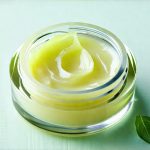Retinoids have become skincare staples for many, lauded for their ability to address concerns like acne, aging, and hyperpigmentation. Their efficacy stems from accelerating skin cell turnover, leading to smoother texture, reduced wrinkles, and a brighter complexion. However, the increasing popularity of retinoids also means more people are navigating potential interactions with other medications they may be taking, including those prescribed for bladder conditions. Understanding these potential interactions isn’t about fear-mongering; it’s about informed skincare and prioritizing overall health. Many individuals manage both skin concerns and bladder issues simultaneously, and a thoughtful approach can ensure both aspects of their wellbeing are addressed safely and effectively.
The complexity arises because retinoids aren’t simply topical agents—they enter the bloodstream to some degree, albeit limited. This means they can, in theory, interact with other drugs metabolized by the liver or kidneys, potentially altering their efficacy or increasing the risk of side effects. Bladder medications, too, often involve complex metabolic pathways and can have systemic effects beyond just relieving urinary symptoms. It’s crucial to remember that every individual responds differently, making a one-size-fits-all answer impossible. This article will explore potential considerations when combining retinoid use with common bladder medications, emphasizing the importance of open communication with your healthcare providers.
Potential Interactions & Considerations
The primary concern lies in how retinoids might affect the metabolism of certain bladder medications, or vice versa. Many bladder medications are processed by the liver’s cytochrome P450 enzyme system – a group of enzymes responsible for breaking down numerous drugs. Retinoids can subtly influence this system, potentially slowing down or speeding up the metabolism of these medications. This could lead to either insufficient drug levels (reducing effectiveness) or excessively high levels (increasing side effects). Furthermore, some bladder medications have anticholinergic properties which impact skin hydration and barrier function, creating a potential feedback loop when combined with retinoids known to cause dryness.
It’s important to understand that the extent of these interactions depends on several factors: – The specific type of retinoid used (strength, formulation) – The specific bladder medication prescribed – different drugs are metabolized differently – Individual metabolic rate and overall health status – liver and kidney function play a huge role – Dosage of both the retinoid and the bladder medication.
These aren’t necessarily roadblocks to using both, but they necessitate awareness and proactive communication with your doctor and dermatologist. They can assess your individual situation and provide tailored guidance. Do not adjust dosages or stop medications without consulting a healthcare professional. The goal is always safe and effective management of both conditions.
Understanding Common Bladder Medications
Several types of medications are frequently prescribed for bladder issues, each with its own mechanism of action and potential for interaction. Anticholinergics, like oxybutynin and tolterodine, are often used to reduce urgency and frequency by blocking nerve signals that cause the bladder to contract. These can contribute to significant skin dryness as a side effect, potentially exacerbating retinoid-induced dryness. Beta-3 agonists (mirabegron) offer an alternative approach, relaxing the bladder muscle without some of the anticholinergic side effects, but still require consideration when combined with retinoids due to potential metabolic interactions.
Another category includes tricyclic antidepressants, like imipramine, sometimes used off-label for overactive bladder. These can affect various neurotransmitter systems and may have complex drug interactions. Finally, medications targeting specific causes of urinary incontinence, such as desmopressin (for nighttime enuresis), also need to be considered in relation to retinoid use. Knowing which medication you’re on is the first step toward understanding potential conflicts.
Retinoid Strength and Formulation Matter
The strength and formulation of your retinoid significantly impact the likelihood and severity of any interaction. Over-the-counter retinol products, generally lower in concentration than prescription retinoids like tretinoin or tazarotene, pose a smaller risk due to reduced systemic absorption. However, even low-strength retinols can contribute to skin dryness, which might be problematic when combined with anticholinergic bladder medications.
Formulation also plays a role: – Creams and lotions tend to have lower absorption rates than gels or serums. – Encapsulated retinoids (where the retinol is encased in a protective shell) may offer reduced systemic exposure. – The frequency of application matters – daily use will lead to greater absorption compared to occasional use.
Choosing milder formulations, reducing application frequency, and incorporating hydrating skincare products can all help mitigate potential issues. Again, these are strategies to discuss with your doctor—they shouldn’t be implemented independently.
Communication is Key: Talking to Your Healthcare Team
The most important takeaway is open communication with your healthcare providers. When you visit your dermatologist or primary care physician, inform them of all medications you’re taking, including over-the-counter drugs and supplements, as well as any existing medical conditions. Specifically mention that you’re using a retinoid (and its strength/formulation) and the bladder medication prescribed.
Here are some questions to consider asking: 1. “Could my retinoid potentially interact with my bladder medication?” 2. “Are there any adjustments I should make to my skincare routine or medication schedule?” 3. “Should I be monitoring for specific side effects, such as increased skin dryness or changes in bladder control?”
Don’t hesitate to advocate for your health and seek clarification if you’re unsure about anything. A collaborative approach between all members of your healthcare team—dermatologist, primary care physician, urologist—is the best way to ensure safe and effective management of both your skincare concerns and bladder issues. It is vital to remember that this information serves as education, not a substitute for professional medical advice.





















